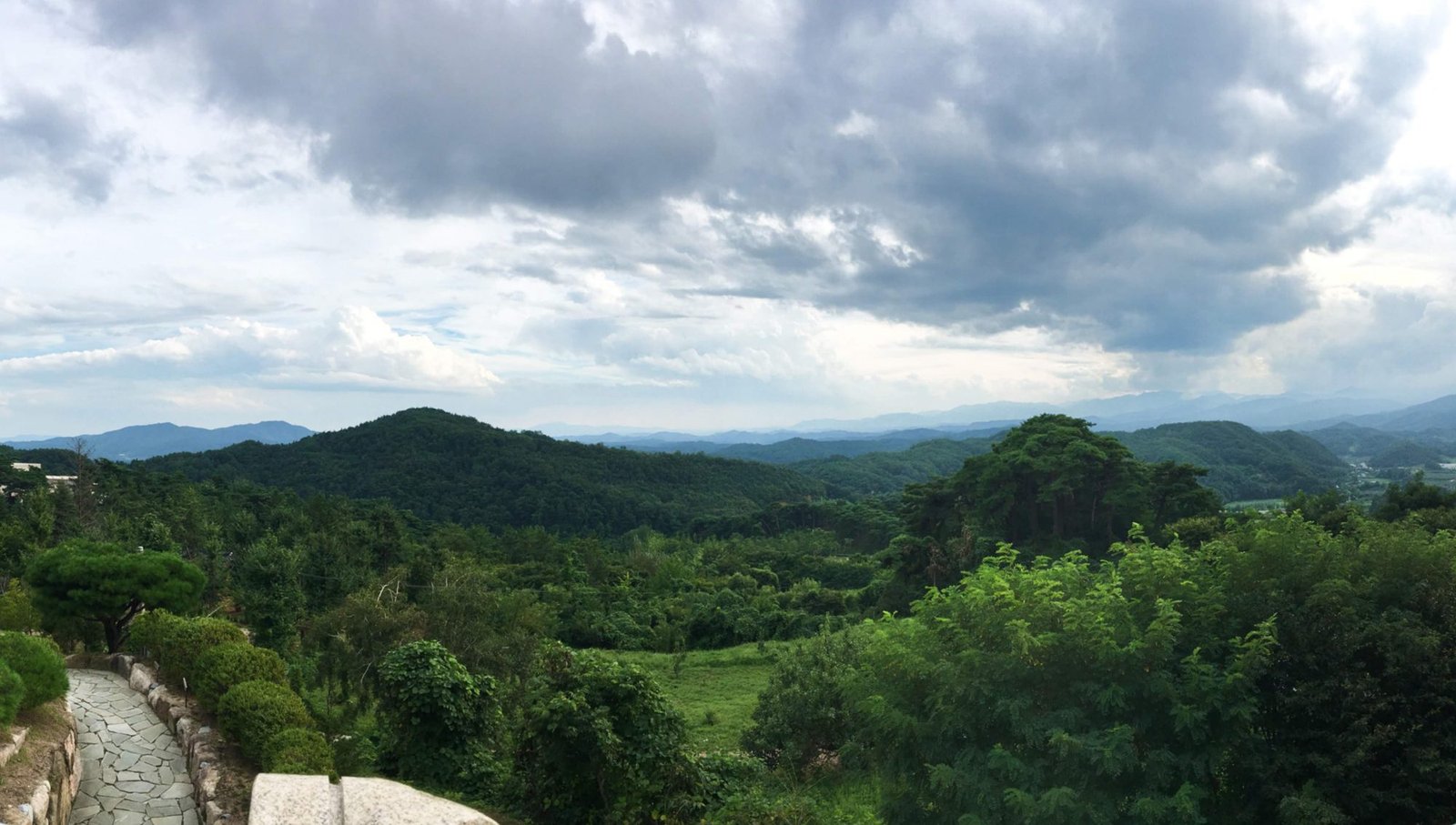On Saturday I crossed the Military Demarcation Line into North Korea.
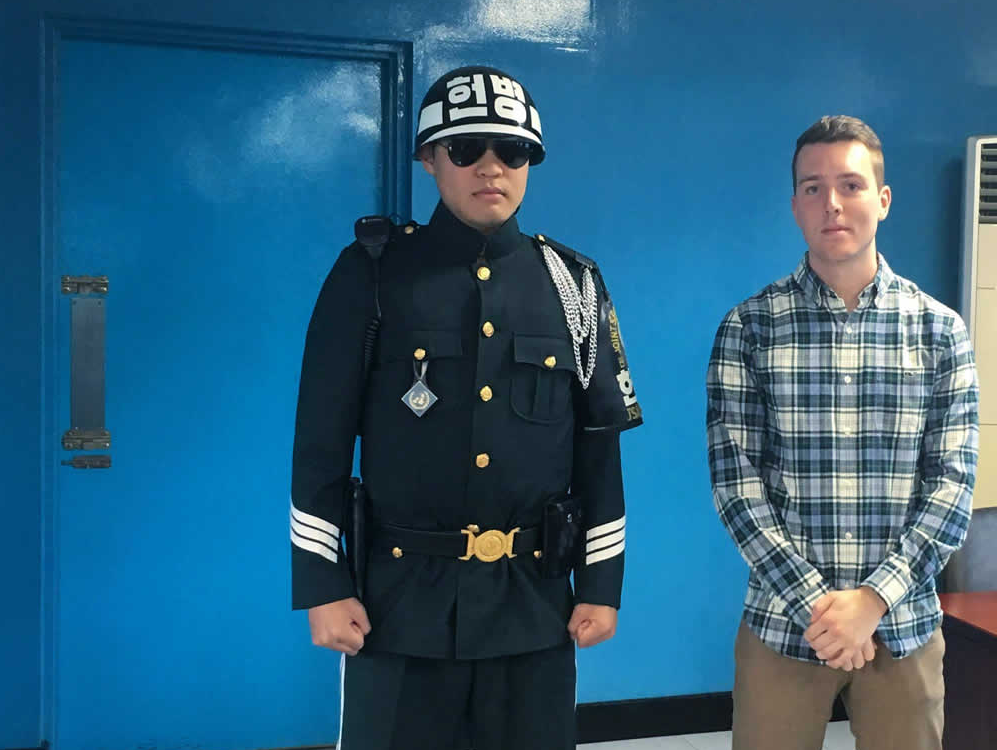
My study abroad program had the privilege of going to the Demilitarized Zone (DMZ) and the Joint Security Area (JSA) as the very last organized, military-escorted tour for the foreseeable future (or, if things continue to progress, for all of history) with the forthcoming demilitarization of the JSA.
Our tour guide was a retired US Army Lieutenant Colonel (who somehow figured out I am a Midshipman, and naturally gave me a hard time for it). He was first stationed in Korea in 1979, and has been serving here in some capacity ever since. He had a very involved role in many of the negotiation talks of the late-20th and early-21st centuries before his retirement, and was incredibly knowledgeable about the Korean War and the dynamics of inter-peninsular politics and military operations. Because of his many roles (past and current) we were able to gain unique insights, and were incredibly fortunate to have the privilege of being the last official tour group to ever visit the militarized JSA.
We took a large passenger bus from Seoul to the DMZ, and as we got closer to the DMZ—about 40 kilometers (or 25 miles)—from downtown Seoul, North Korea could be seen across the Han River estuary. It was a very clear day, so I could make out the mountain ranges and the many small villages dotting the foothills and the bank of the Han River. I felt overcome with this surreal feeling of looking at this mysterious country that I have heard so much about from the news and from history courses, but to actually see it with my own eyes was a strangely remarkable feeling. It was particularly odd to think about the thousands of artillery scattered throughout the mountains and pointed straight at Seoul. I also noticed that the South Korean side of the river was very lush with vegetation, but the North Korean side was clearly not so. Curious, I did some research and learned that following the Korean War, the South Korean government put significant effort into re-foresting their lands, as the deeds of war took a significant toll on the landscape. Their efforts were extremely successful, and the forest has reached a point where it can actually be commercialized. Evidently this was not a priority for Kim Il Sung, nor his son or grandson.
We drove through the ‘civilian control line,’ which is very much like a gate to a naval station or any military base, complete with guards who man a post and request identification and/or reason for visit. People are only allowed into the DMZ on ‘official business,’ which apparently includes organized tours. We drove past the South Korean village of Tongil Chon—or “Unification Village”—which is home to many ginseng farmers who live peacefully within the DMZ in government-subsidized housing, completely free of taxation. The village’s original purpose was actually to serve as South Korean propaganda. It is visible from the North Korean side, and the intent was to show off South Korea’s wealth and quality of life to their northern neighbors to encourage dissent and defection. Those living in the village are certainly wealthy now, but the propaganda effect has most likely worn off. North Korea has a similar village on their side.
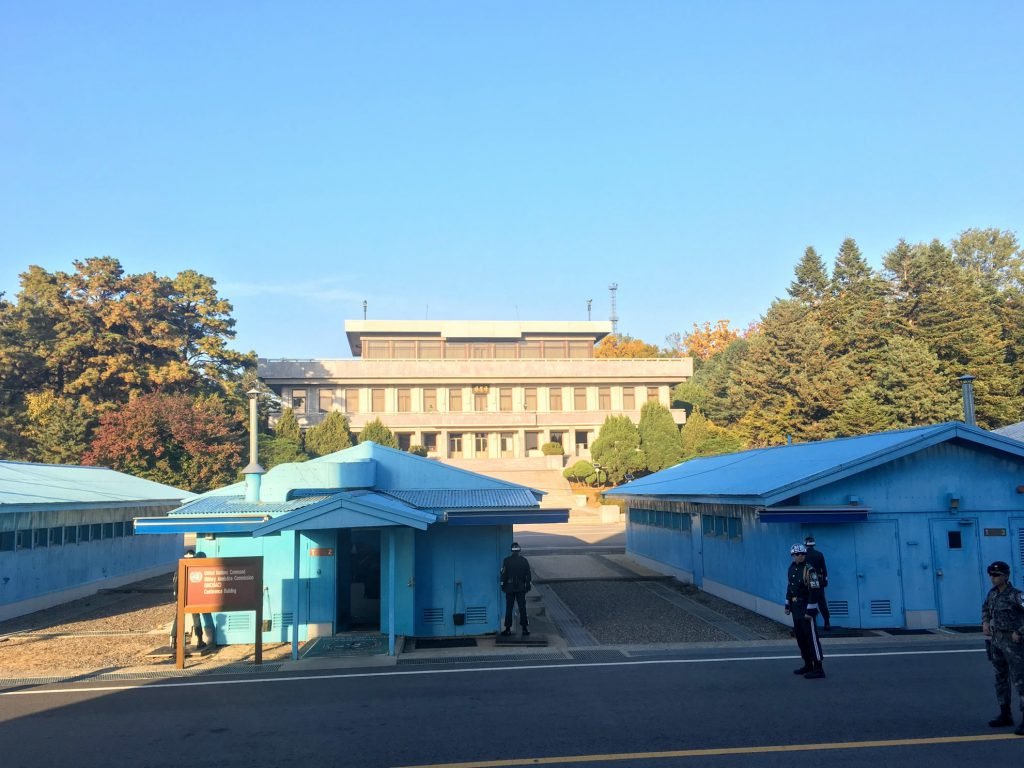
Our first stop was at a small visitor center that contains an entrance to a long tunnel beneath the DMZ. This is one of several tunnels underneath the DMZ and near Seoul that was built by the North Koreans after the Korean War (yes, even after the armistice agreement) to move troops quickly and covertly in the event of an invasion. The tunnels, first discovered in the 1970s after tips from North Korean military defectors, are known as ‘Tunnels of Aggression’ in South Korea, and have become a unique remnant of the longstanding conflict. The tunnel entrance on the South Korean side is a mere 32 miles from Seoul. Pyongyang vehemently denies digging these tunnels, claiming that they must be old coal mining shafts. Which is odd, given the absence of coal and the fact that the tunnels are composed entirely of granite. The entrance from the South Korean side of the DMZ took us down a very steep grade to a point 240 feet below the surface. The shaft was extremely small, designed for the average-build North Korean soldier coming in at a staggering 5’ 2”. It also came to an abrupt halt at a point where the North Koreans, upon learning that their southern neighbors had discovered the tunnel, went down and blew up their side of the shaft in an effort to cover their tracks (and maybe prevent a counter-invasion).
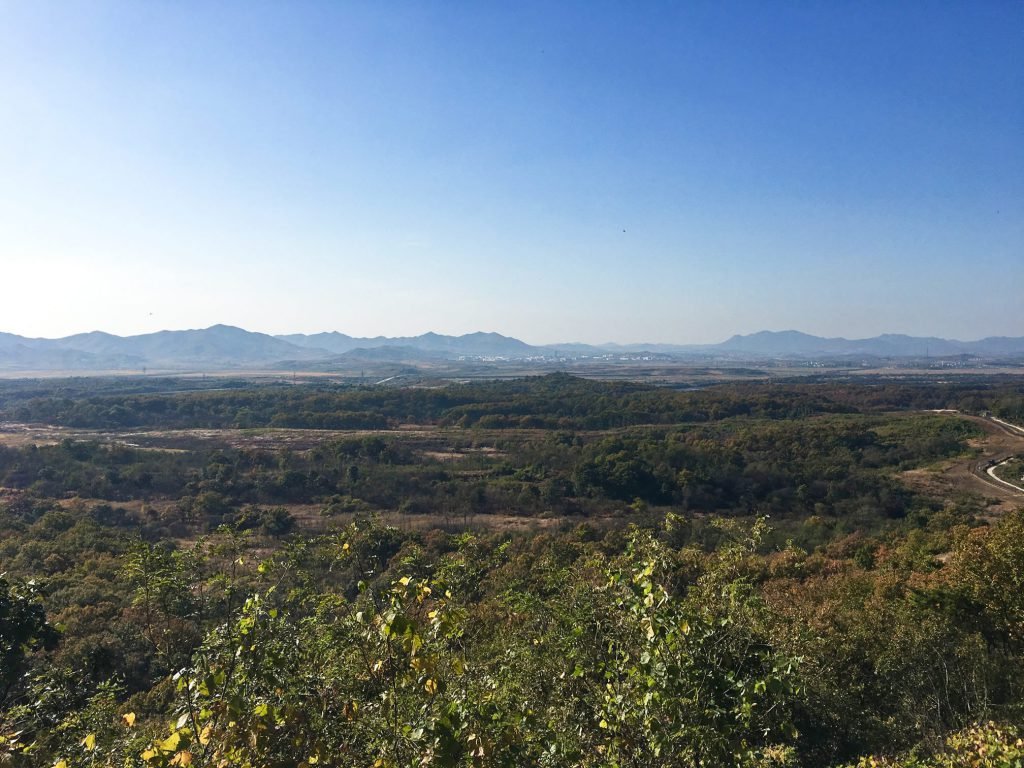
After the steep hike back out of the tunnel, we took a bus to the Dora Observatory, which sits atop a large hill (once occupied by United States Marines) and overlooks North Korea. Once again, it felt so strange to look out across a country so shrouded in mystery, scandal, censorship, corruption, and unpredictability. From the observatory I could see dozens of large towers dotting the mountain ranges. These towers, I learned, are used to jam any and all radio signals being transmitted by South Korea. I didn’t have any cellular service at the observatory, despite being on the South Korean side.
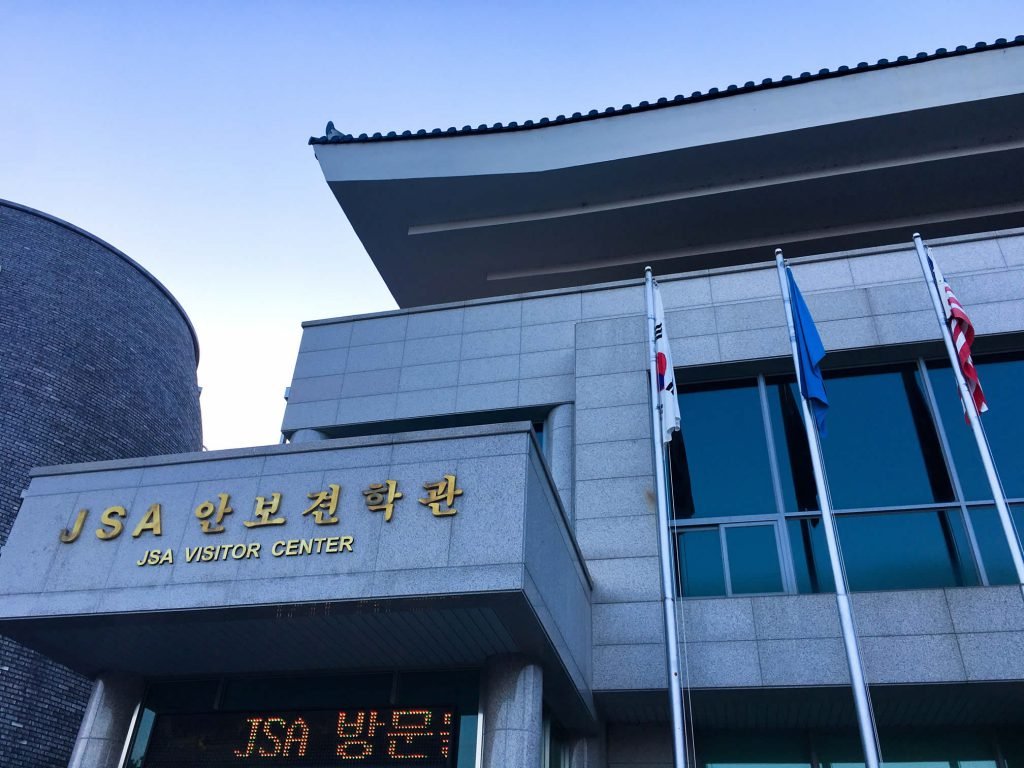
Finally, we made our way to the Joint Security Area (JSA), but first had to meet our escort at Camp Bonifas. On our way, we passed many signs warning visitors to stay on the road due to the surrounding active minefields that have yet to be cleared. The signs seemed very old, but I was not going to try my luck. Camp Bonifas is the United Nations Command post located very close to the JSA, and only 400m from the Military Demarcation Line (MDL; the actual border between North and South Korea within the DMZ). This is the line that truly matters. We were escorted to the JSA by a US Army Corporal who has only been here for a short time. He said it was a special moment for him, and a historic moment at the JSA, since we were the final group to see it in all its ‘militarized splendor.’ Despite its name, the DMZ is actually fairly militarized, but recent negotiations have resulted in agreements to truly demilitarize the JSA. The JSA is the single area within the DMZ where North and South Koreans can look straight into each other’s eyes. Within the JSA is the Truce Village of Panmunjom, which primarily comprises three blue “temporary” conference buildings. Each building is cut in half by the MDL. In other words, if you walk in the door on one end and exit the door on the other, you have essentially defected. We were able to go into the center conference building where the most recent negotiations between South Korean President Moon Jae-in and North Korean Supreme Leader Kim Jong-un took place. We were also allowed to actually cross the MDL into North Korea. However, we were warned by the ROK soldier standing guard within the building that if we went through the door behind him, there is nothing he could do for us. Needless to say, nobody went near the door.
There was an eerie stillness within the JSA that I was not prepared for. So many of the major attractions that I have been to in South Korea have been crawling with visitors and tourists. In this case, however, it was just the ten of us plus a few ROK soldiers and the DPRK soldiers staring down at us from their tower on the other side of the MDL. Everybody was on high alert. The tension was palpable, and unlike anything I have ever felt. It is an experience that I will never forget.
